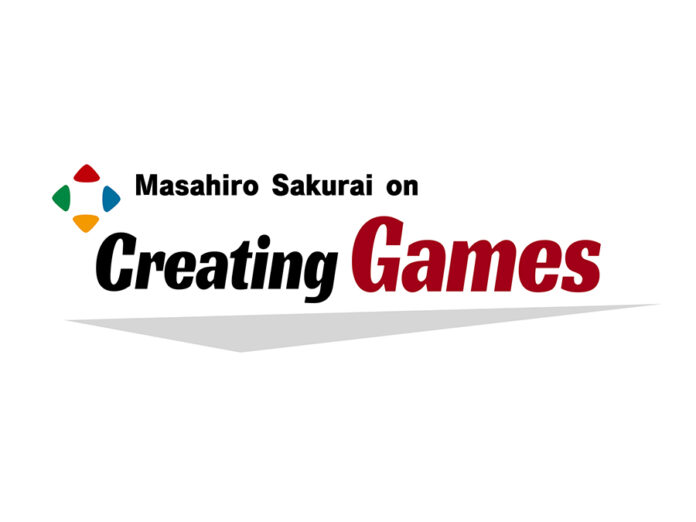
Super Smash Bros. Ultimate director Masahiro Sakurai has started a new YouTube channel called “Masahiro Sakurai on Creating Games.” Check out the latest batch of uploaded content via the embedded video below:
Final Output [Graphics]
Creating a game’s visuals isn’t as simple as making a model or drawing an image—it’s the post-processing which lends them real depth and presence.
A World with Less Color [Planning & Game Design]
Recently, many games have started offering support for players with different color perceptions.
I’ve often considered this topic, even when creating games that lacked adjustable color settings.
D: Design Specifics 1 (Category Compilation) #01~#08
In Category D: Design Specifics, I talk in-depth about systems and mechanics used in games. There’s some occasional crossover with the Planning & Game Design category, but I tend to examine the topics here in greater detail.
[Index]
0:00 Opening
0:11 D-1 Stop for Big Moments!
4:29 D-2 Giving “Weight” to Buttons
6:48 D-3 Jump Physics
11:38 D-4 Eight Hit Stop Techniques
17:07 D-5 Don’t Anchor Your Center Point
19:55 D-6 Say No to Slow!
23:00 D-7 Units of Speed
26:02 D-8 Behavior at Ledges
[Playlist D: Design Specifics]
• [D: Design Specifics]
Better Than Not Being Able to Beat the Game [Game Essence]
Games are at their most exciting when you can just barely overcome their difficulty. However, not all players have the skill to beat every game…
How should we go about balancing difficulty in such cases?
Say It, and It Might Come True [Work Ethic]
The idea that words have power has merit—the things you say and how you say them can change the way you experience the world around you!
Advancing Text [UI]
Fully voiced games have grown more common these days, a fact which I’m grateful for. However, this does slow things down compared to games where you only read text.
Today, I’ll talk about giving players the freedom to move through conversations briskly.
Portraying Fingers [Animation]
When working with animation, it’s important to consider how to portray fingers. Though they’re small, animating them demands quite a lot of processing power, so we often need to find clever workarounds when possible.
1986: The Year of Legend [Grab Bag]
In my opinion, 1986 was a truly amazing year for gaming. Just look at all the big titles that released in Japan that year!
I captured a lot of footage for this one…
Bug Testing Systems [Team Management]
The teams we rely on for bug testing can sometimes be larger than the actual development team on a given game. Today, I’ll discuss some of the fundamentals of how this process works.
Playing Games in Front of Other People [Marketing]
For some reason, I find myself playing games in front of other people rather often…
In a way, it’s just like giving a presentation. Seeing is believing!
Using Parameters to Establish Characters [Planning & Game Design]
Games are made up of sets of numbers, but it’s up to their creators to decide what feelings those numbers convey. Like graphics and sound, game parameters are a kind of art, so we want them to be memorable.
Making the Imaginary Feel Real [Graphics]
Objects in games are weightless, insubstantial imitations—and yet, they don’t feel that way thanks to all the hard work creators put into maintaining the illusion.
Balancing Ambient Sounds [Audio]
Ambient sounds are likely the least exciting audio you’ll hear in a game. All the same, they’re vital for bringing your world to life—so you’ll want to make them as natural and subtle as possible!
Making “Work” Games Fun [Game Essence]
While this episode falls under the Game Essence category, game essence isn’t the only thing that makes a game fun.
This time, I’ll be examining games that can really pull you in, even without any inherent push and pull.
Handicap Systems [Design Specifics]
In competitive scenes, it’s expected for each player’s skill to be directly reflected—but not all games need to be so intense.
For more casual games that will be enjoyed by a wider audience, you’ll need a system for implementing handicap settings.
B: Game Essence 1 (Category Compilation) #01~#06
In Category B: Game Essence, I define “game essence” as risk and reward, and explore how it impacts the push and pull at the heart of games.
[Index]
0:00 Opening
0:11 B-1 Risk and Reward
10:08 B-2 Squeeze and Release
12:46 B-3 Game Essence in Role-Playing Games
15:20 B-4 Fun Beyond Game Essence
22:06 B-5 The Fiend’s Cauldron
26:55 B-6 Let Players Cheat the System
[Playlist B: Game Essence]
Masahiro Sakurai on Creating Games Introduction Video
My goal for this channel is to benefit those who make games, those who play games, and those who work in games.
I hope you’ll continue to tune in as we move forward!
About This Channel
Join me as I kick off my new channel, “Masahiro Sakurai on Creating Games,” with an overview of the kinds of things I’ll be talking about.
Why am I making a channel, exactly?
You’ll find out in this video.
Source: Masahiro Sakurai
Source:Pokémon




